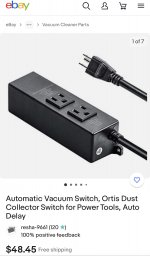goldstar
Senior Member
- Location
- New Jersey
- Occupation
- Electrical Contractor
I'm in the process of a residential kitchen remodel and the exhaust hood the HO is using states that it a 700 cfm exhaust. The bldg. dept is telling us that if an exhaust hood is over 400 cfm we will need a make-up air fan. If anyone has had experience with this set-up would you please post what you've done with respect to wiring, branch circuit requirements, etc. I do not have the specs with me. Much appreciated in advance.


